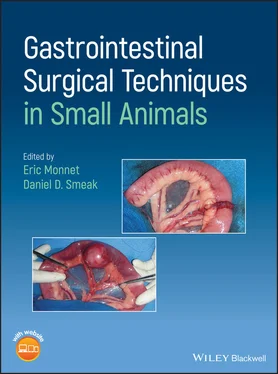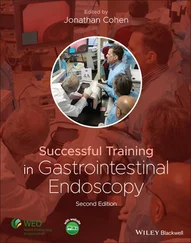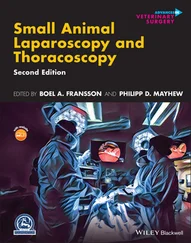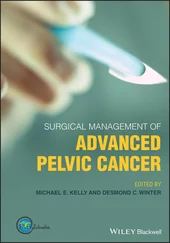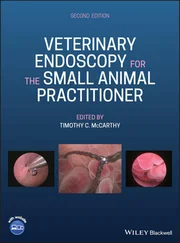Library of Congress Cataloging‐in‐Publication Data
Names: Monnet, Eric, author, editor. | Smeak, Daniel D., author, editor.
Title: Gastrointestinal surgical techniques in small animals / edited by Eric Monnet, Dan Smeak.
Description: Hoboken, NJ : John Wiley & Sons, 2020. | Includes bibliographical references and index.
Identifiers: LCCN 2019056768 (print) | LCCN 2019056769 (ebook) | ISBN 9781119369202 (hardback) | ISBN 9781119369226 (adobe pdf) | ISBN 9781119369233 (epub)
Subjects: MESH: Digestive System Surgical Procedures–veterinary | Dogs–surgery | Cats–surgery | Surgery, Veterinary–methods
Classification: LCC SF911 (print) | LCC SF911 (ebook) | NLM SF 911 | DDC 636.089/743–dc23
LC record available at https://lccn.loc.gov/2019056768LC ebook record available at https://lccn.loc.gov/2019056769
Cover Design: Wiley
Cover Images: Courtesy of Eric Monnet
Chad Lothamer, DVM, DAVDCDentistry and Oral Surgery College of Veterinary Medicine University of Tennessee Knoxville, TN, USA
Eric Monnet, DVM, PhD, DACVS, DECVSDepartment of Clinical Sciences College of Veterinary Medicine and Biomedical Sciences Colorado State University Fort Collins, CO, USA
Jennifer Rawlinson, DVM, DAVDCDepartment of Clinical Sciences College of Veterinary Medicine and Biomedical Sciences Colorado State University Fort Collins, CO, USA
Bernard Séguin, DVM, MS, DACVSDepartment of Clinical Sciences College of Veterinary Medicine and Biomedical Sciences Colorado State University Fort Collins, CO, USA
Daniel D. Smeak, DVM, DACVSDepartment of Clinical Sciences College of Veterinary Medicine and Biomedical Sciences Colorado State University Fort Collins, CO, USA
Small animal general surgery has evolved rapidly in the past decade. Procedures have become increasingly complex, including the expansion of minimally invasive surgery options. Gastrointestinal conditions requiring surgical therapy are very common in small animal practice. Therefore, we have created this gastrointestinal surgery textbook to serve as a current and comprehensive reference tool for general practitioners, surgery residents in training, and surgeons.
In this textbook, current techniques for gastrointestinal surgery are thoroughly described with detailed illustrations embedded in the text. With this in mind we chose to work closely with Molly Pullen ( www.mborman.com) for her expert pen‐and‐ink illustrations. In addition, when necessary, surgical techniques are supplemented with intraoperative images.
For each technique described, tips are included by the authors to explain the surgeon's preferences among all the techniques depicted, and to give details to help the reader perform the procedures effectively. Our intent for adding tips was to allow chapter authors the ability to express their preferences in technique, many of which are not evidence‐based.
In this textbook we placed a strong emphasis on description of surgical techniques. We chose not to delve heavily in the pathophysiology or the diagnostic workup for the different surgical conditions mentioned because those topics are well described in other textbooks.
We would like to thank all the authors who assisted us during the arduous process of developing this new textbook. In the future, this textbook will be updated as needed to follow the progress and advances in veterinary gastrointestinal surgery.
About the Companion Website
Don’t forget to visit the companion website for this book:
www.wiley.com/go/monnet/gastrointestinal 
There you will find valuable material designed to enhance your learning, including:
Illustrations
Video clips
Scan this QR code to visit the companion website

Section I General Concepts
1 Gastrointestinal Healing
Eric Monnet and Daniel D. Smeak
Department of Clinical Sciences, College of Veterinary Medicine and Biomedical Sciences, Colorado State University, Fort Collins, CO, USA
The gastrointestinal tract heals as any other tissue in an orderly manner, with an inflammatory phase, a debridement phase, a granulation phase, and a maturation phase. However, there are some characteristics very specific to the gastrointestinal tract that sets it apart from other healing tissues.
The healing process of the gastrointestinal tract should not only re‐establish the anatomical integrity of the tract but also its function. Healing should happen with minimal scaring and stricture formation that could impede the motility of the gastrointestinal tract. Additionally, the formation of adhesions, even though rare in small animal surgery, could deteriorate gastrointestinal motility and should be minimized.
The wall of the gastrointestinal tract has a mucosa, a submucosa, a muscularis, and a serosa, except the esophagus and the distal rectum.
The mucosa has three distinct layers: the epithelium, the lamina propria and the muscularis mucosa. The lamina propria layer is made of vessels, lymphatics, and mesenchymal cells whereas the muscularis mucosa is a thin muscle layer. After completing the anastomosis, the mucosa heals very fast by epithelial cells migration over the defect providing a rapid barrier from the intestinal content. For intestinal healing to occur, a good surgical apposition of layers is required; everting or inverting patterns interfere with mucosal healing.
The submucosa layer, incorporating the bulk of the collagen, is the holding layer in intestinal surgery. Type I collagen (68%) predominates in the submucosa, followed by type III (20%) and finally collagen type V (12%) (Thornton and Barbul 1997). It is a loose connective tissue with lymphatic, nerve fibers, ganglia, and blood vessels that should be preserved during surgery. The muscularis layer consists of an inner circular muscle layer, a longitudinal outer muscle layer and collagen fibers. The serosal surface is made of connective tissue with mesothelial cells, lymphatics, and blood vessels. The serosa is important in the healing process because it helps prevent leakage of the gastrointestinal content in the immediate post‐operative period.
1.2 Phases of Wound Healing
1.2.1 Partial Thickness Injury
A partial thickness injury affecting only the mucosa or the serosa heals with epithelial cells and mesothelial cells proliferation without scaring. A full‐thickness trauma of the gastrointestinal tract results in an inflammatory reaction and a non‐epithelial cell proliferation that can result in scaring secondary to fibroblast activity (Thornton and Barbul 1997; Thompson et al. 2006).
1.2.2 Full‐Thickness Injury
As soon as the wall of the gastrointestinal tract is incised, hemorrhage occurs but it is rapidly controlled by an intense vasoconstriction. Following this initial phase, vasodilation occurs with migration of neutrophils, macrophages, platelets, and liberation of inflammatory mediators which characterizes the inflammatory phase. The platelets, by releasing diverse platelet‐derived growth factors (PDGF) and cytokines, contribute to hemostasis and cell recruitment like macrophages and fibroblasts. The neutrophils predominate during the first 24 hours but then macrophages become predominant past 48 hours following the initial injury. The macrophages play an important role in healing of the gastrointestinal tract by controlling local infection with phagocytosis, production of oxygen radicals, and nitric oxide. They also participate in debridement with phagocytosis and production of collagenase and elastase. The macrophages also regulate matrix synthesis and cell recruitment and activation. They release several growth factors (PDGF, transforming growth factor (TGFβ), fibroblast growth factor (FGF), IGF) and cytokines (TNFα, IL‐1) important for tissue healing. The macrophages recruit lymphocytes that liberate interleukin (IL‐6) and interferon (IFN) and promote angiogenesis with production of VEGF (Vasculogenic Endothelial Growth Factor). Finally, the capillary permeability is increased resulting in inflammation and edema on the edges of the incision that can persist for two weeks. Care should be taken initially when the sutures are placed to not induce tissue strangulation and necrosis. A fibrin seal develops over the serosa very quickly to provide a leakage protection of the surgical site (Pascoe and Peterson 1989; Thornton and Barbul 1997; Thompson et al. 2006).
Читать дальше
